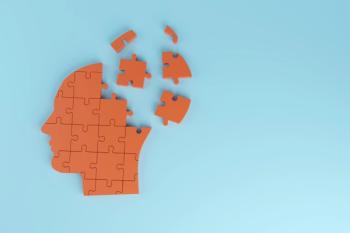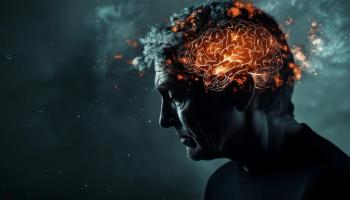
Do Psychiatrists Treat Diseases?
Ronald W Pies, MD, considers the evidence from pathology textbooks—and answers the critics.
COMMENTARY
Of the many canards directed against psychiatry in the late 20th century, one of the most enduring was the claim that psychiatric disorders are never included in pathology textbooks. For example, in 1998, a psychology professor confidently wrote: “If ‘mental illness’ is really a brain disease, it would be listed as such in standard textbooks on pathology. It is not listed as a brain disease because it does not meet the nosological criteria for
However, as I argued in an article published more than
Brains, of course, may show cellular pathology, but this is merely the physical substratum of some
The editors go on to aver that the physician’s “primary and traditional objectives are utilitarian—the prevention and cure of disease and the relief of suffering, whether of body or of mind.”4
In so arguing, the editors were implicitly invoking the 12th century physician-philosopher
Why Should We Care What Pathology Textbooks Say?
In my 2008 article, I presented several examples of pathology or neuropathology textbooks that recognized schizophrenia as a bona fide form of disease.6 In this article, I can update the list of pathology texts that clearly recognize schizophrenia as an instantiation of disease. To be clear: this is quite different than claiming that schizophrenia is a single, discrete disease like, say, pneumococcal pneumonia; it almost certainly is not.
Schizophrenia has been recognized as a form of disease for a long time. Eugen Bleuler, MD, referred to “the schizophrenias” (plural) more than 100 years ago, and most academics today see schizophrenia as a heterogeneous group of
But why bother with this exercise in the first place? I believe that the issue has great relevance to the place psychiatry occupies in the overall field of medicine. The voices of antipsychiatry are intent on extruding and excluding psychiatry from the realm of legitimate medical specialties, and they attempt to do so by denying that the conditions we treat qualify as genuine
Pathology Texts that Recognize Schizophrenia
If some pathology textbooks recognize psychiatric conditions like schizophrenia as legitimate examples of disease, antipsychiatry’s case is radically weakened. With that in mind, here are some updated entries from several pathology texts that recognize schizophrenia as bona fide disease.
Note how this last sentence gives the lie to 3 cardinal (and bogus) tenets of antipsychiatry: 1) real disease must be physical or bodily, not mental; 2) real diseases must demonstrate specific biochemical or morphological deviations from normal; and 3) schizophrenia and depression are not real diseases. That the author views mental diseases as acquired due to mental stress is certainly open to revision and refinement, but this is no obstacle to considering schizophrenia a type of disease.
Concluding Thoughts
To be clear: the reality of psychiatric disease is not dependent on what textbooks do or do not include as diseases. That reality is demonstrated every day in the suffering and incapacity of
Dr Pies is professor emeritus of psychiatry and lecturer on bioethics and humanities, SUNY Upstate Medical University; clinical professor of psychiatry, Tufts University School of Medicine; and Editor in Chief emeritus of Psychiatric TimesTM (2007-2010).
References
1. Schaler J.
2. Pies R. Psychiatric diagnosis and the pathologist's view of schizophrenia. Psychiatry (Edgmont). 2008;5(7):62-65.
3. Reese DM. Fundamentals--Rudolf Virchow and modern medicine. West J Med. 1998;169(2):105-108.
4. Isselbacher K. Introduction. Harrison’s Principles of Internal Medicine, 8th ed. G.W. Thorn et al, eds. McGraw-Hill; 1977.
5. Kottek SS. Toward becoming an accomplished physician: Maimonides versus Galen. Rambam Maimonides Med J. 2011;2(4):e0060.
6. Esri MM, Morris JH, eds. The Neuropathology of Dementia. Cambridge University Press; 1997.
7. Alnæs D, Kaufmann T, van der Meer D, et al. Brain heterogeneity in schizophrenia and its association with polygenic risk. JAMA Psychiatry. 2019;76(7):739-748.
8. Benning TB. No such thing as mental illness? Critical reflections on the major ideas and legacy of Thomas Szasz. BJPsych Bull. 2016;40(6):292-295.
9. Klatt EC, Kumar V. Diseases of infancy and childhood. In: Robbins and Cotran, eds. Review of Pathology, 4th ed. Saunders; 2014:130-146.
10. Solomon DA. Integrating molecular diagnostics with surgical neuropathology. In: Perry A, Bratt DJ, eds. Practical Surgical Neuropathology: A Diagnostic Approach, 2nd edition. Elsevier; 2017:71-90.
11. M. Moretti, LS Rodrigues. Ascorbic acid as an antioxidant and applications to the central nervous system. In: Preedy V, ed. Pathology: Oxidative Stress and Dietary Antioxidants. Academic Press; 2020:159-168.
12. Mohan H. Cellular adaptation and cell injury. Textbook of Pathology + Pathology Quick Review, 8th edition. Jaypee Brothers Medical Publishing; 2018:33-69.
13. Pies RW.
Newsletter
Receive trusted psychiatric news, expert analysis, and clinical insights — subscribe today to support your practice and your patients.














